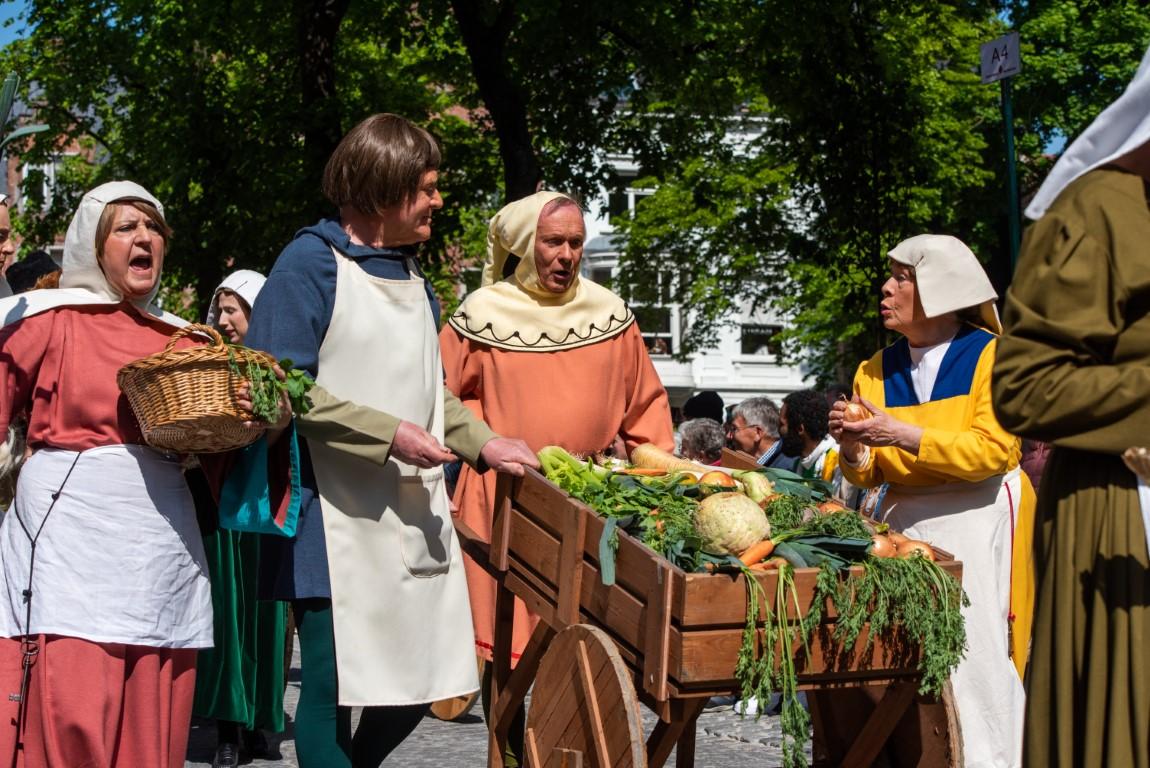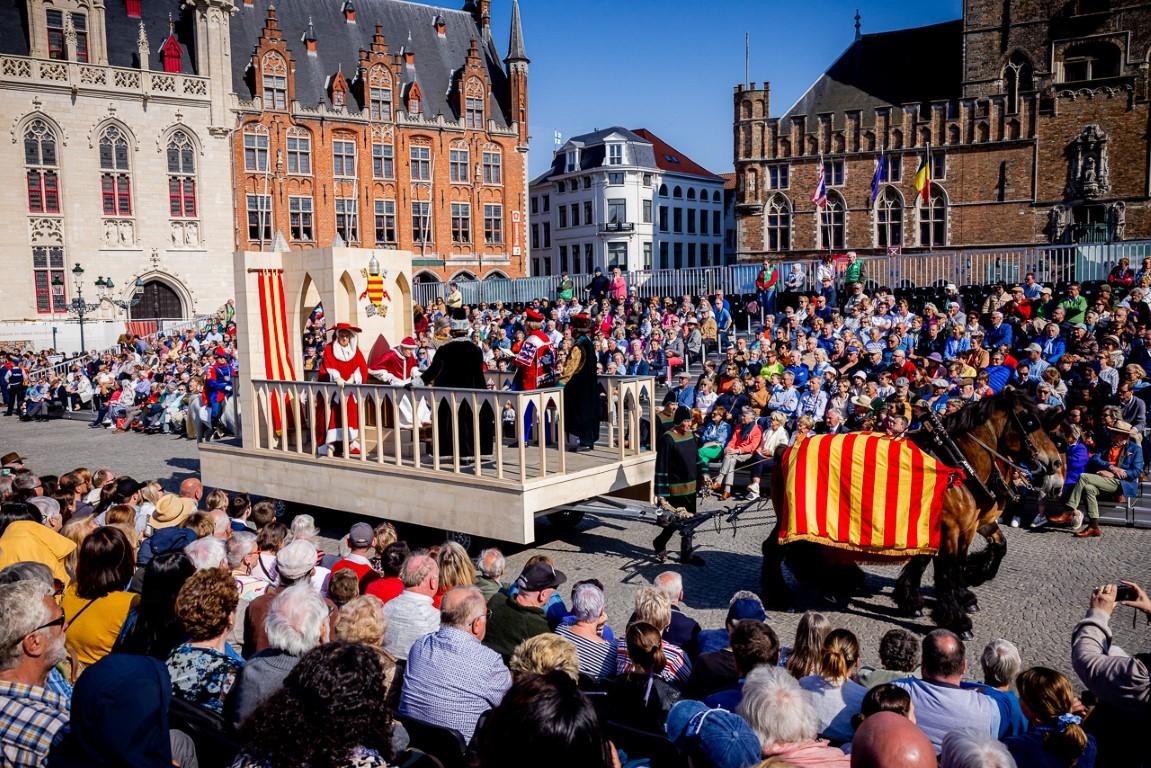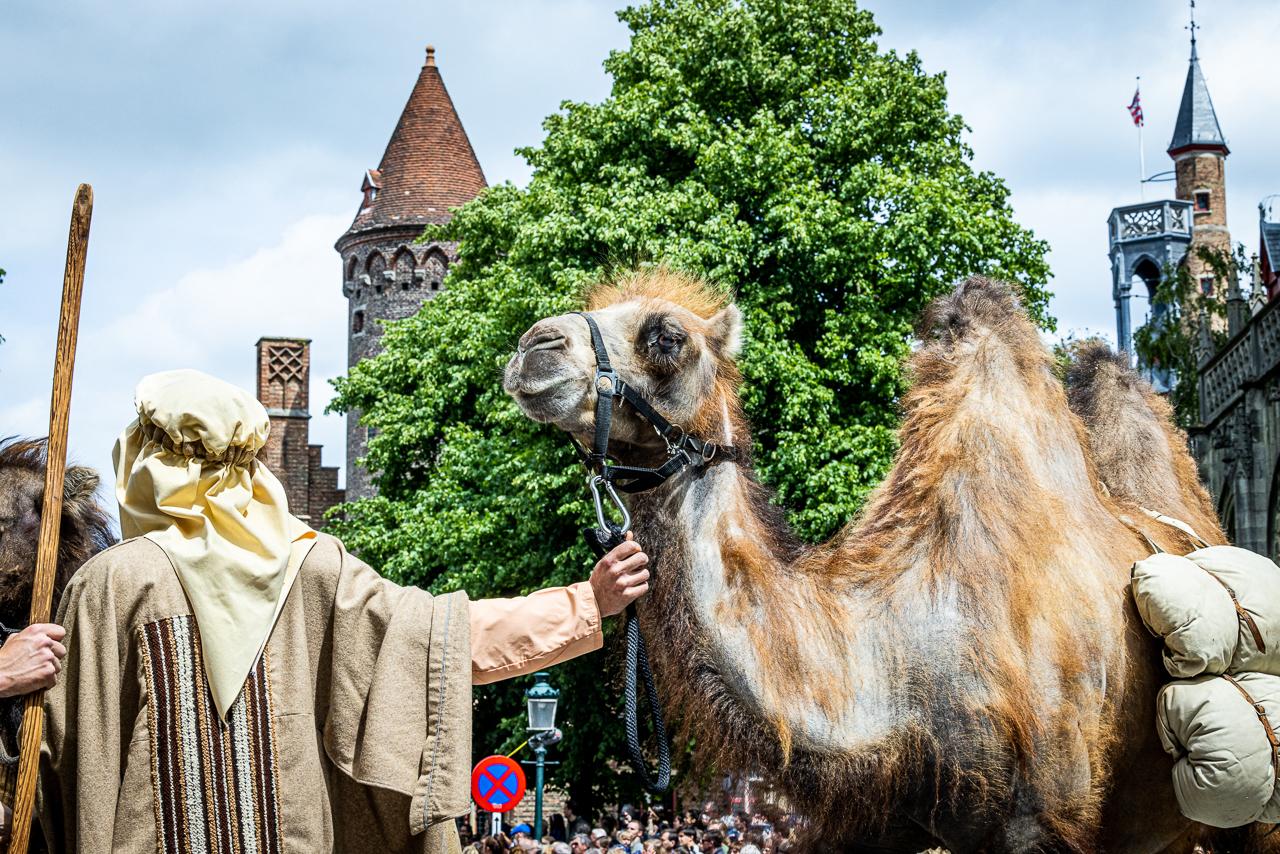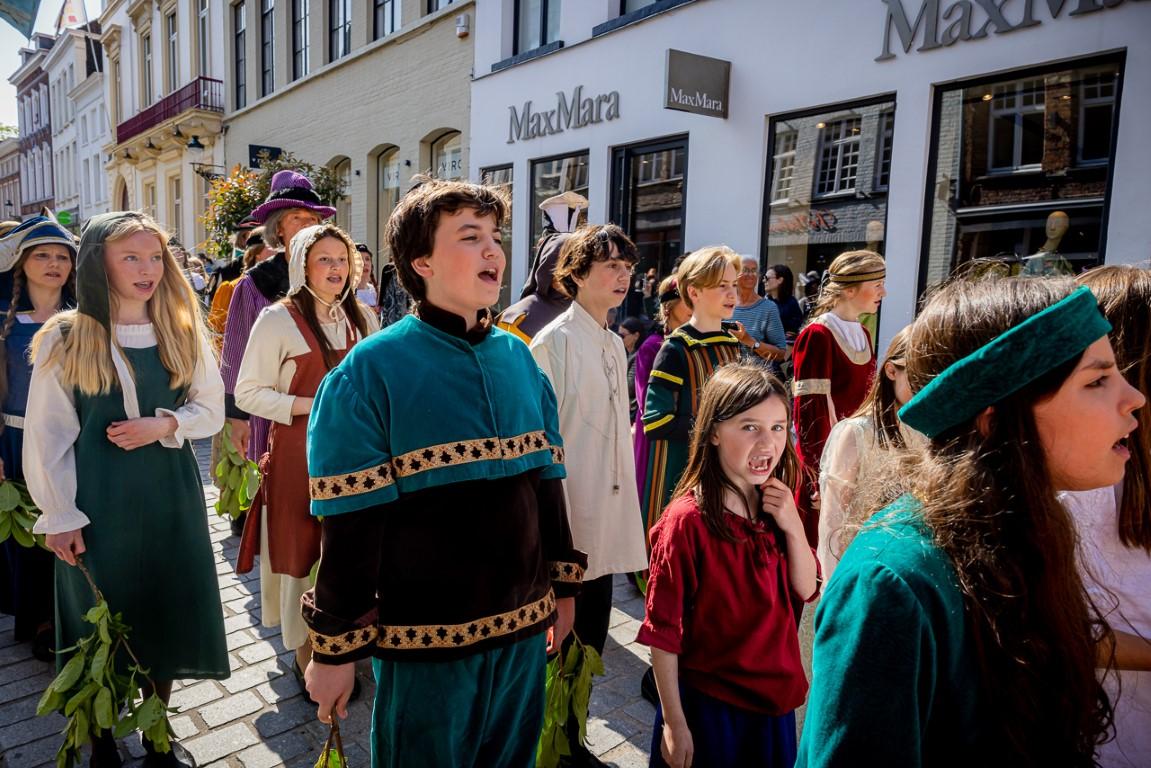
Pope Clemens V
Pope Clement V recognises in 1310 the adoration of the relic of the Holy Blood in Bruges. He agreed to the request of the city council to organise a procession every year. He hands out indulgences to those who come to adore the relic and follow the procession. The papal bull is kept in the city archives of Bruges.

Circumambulation 1311
After Pope Clement V recognised the veneration of the Holy Blood in Bruges in a papal bull issued in 1310, an unusually splendid circumambulation was held in 1311. The papal bull was received by two Bruges mayors. They were followed by a chaplain, who carried the precious relic under a baldachin. This baldachin was borne by brothers of the eight main guilds, including the bakers and shoemakers, since the guilds organised the Procession of the Holy Blood in the Middle Ages, together with the city administration. The people of Bruges were overwhelmed with pride and enthusiasm, and loudly chanted "Long live the Pope" and "Long live Bruges." This unique spectacle reflected the symbiosis between the relic, the city, and its citizens.

Annual fair
A herald brings the good news from Avignon to Bruges during the May fair, the annual fair where merchants recommend their goods. The procession went out for centuries on 3 May. The celebration in honour of the Holy Blood coincided with the annual fair. Pilgrims and merchants from all over the world met each other in the bustling city of Bruges.

Burghers of Bruges
The burghers of Bruges sing the song of triumph. Their rich costume is evidence of the prosperity of the city.



